Lenovo V15 review – an affordable offering with entry-level NVIDIA graphics solution
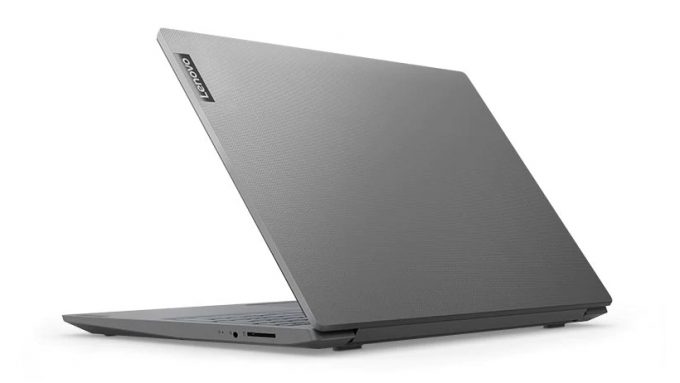 What do we have today? Another affordable business offering? Okay. It just… seems too familiar. We haven’t got it already, but we feel like we had. Oh, the reason for that is that it uses basically the same body and chassis design as the Lenovo V155 (15). However, instead of the AMD chipset, this time Lenovo gives you the Intel Whiskey Lake processors.
What do we have today? Another affordable business offering? Okay. It just… seems too familiar. We haven’t got it already, but we feel like we had. Oh, the reason for that is that it uses basically the same body and chassis design as the Lenovo V155 (15). However, instead of the AMD chipset, this time Lenovo gives you the Intel Whiskey Lake processors.
Not only that, but you have the option to equip it with a dedicated graphics card. Well, honestly, it is one of those GPUs that some people are wondering, why are they even there? Yep, we are talking about the GeForce MX110. While we are not big fans of it, one can’t hide from the fact that it comes with 2GB of GDDR5 memory, which means, it won’t take part in the system memory for video purposes.
In addition to all of the aforementioned, this business machine comes with a choice of two TN panels – a 768p and a 1080p one.
You can check the prices and configurations in our Specs System: https://laptopmedia.com/series/lenovo-v15/
Contents
Specs Sheet
- CPU
- Intel Pentium Silver N5030 #232 in Top CPUs Intel Core i5-1035G1 #211 in Top CPUs Intel Core i5-10210U #223 in Top CPUs Intel Core i3-1005G1 #226 in Top CPUs Intel Celeron N5100 #243 in Top CPUs Intel Celeron N4500 #239 in Top CPUs Intel Celeron N4020 #242 in Top CPUs AMD Ryzen 3 3250U #228 in Top CPUs AMD Athlon Silver 3050U #241 in Top CPUs AMD 3020e #240 in Top CPUsIntel Core i3-10110U AMD Ryzen 5 3500U AMD Athlon Gold 3150U
- GPU
- Intel UHD Graphics G1 #261 in Top GPUs Intel UHD Graphics 605 #266 in Top GPUs Intel UHD Graphics 600 #267 in Top GPUs Intel UHD Graphics (Jasper Lake 16 EU) #259 in Top GPUs Intel UHD Graphics #263 in Top GPUs AMD Radeon RX Vega 8 (R2000/3000, 15W) #252 in Top GPUs AMD Radeon RX Vega 3 #260 in Top GPUsIntel UHD Graphics (Jasper Lake 24 EU)
- HDD/SSD
- up to 2000GB SSD + up to 2000GB HDD
- M.2 Slot
- 1x 2280 PCIe NVMe 3.0 x4 See photo
- RAM
- up to 36GB
- OS
- Windows 11 Pro, Windows 10 Pro, Windows 10 Home, No OS, Windows 11 Home
- Battery
- 35Wh, 30Wh, 38Wh, 35Wh, 2-cell
- Body material
- Plastic / Polycarbonate
- Dimensions
- 362 x 252 x 19.9 mm (14.25" x 9.92" x 0.78")
- Weight
- 2.10 kg (4.6 lbs)
- Ports and connectivity
- 1x USB Type-A
- 3.2 Gen 1 (5 Gbps)
- 2x USB Type-A
- 2.0
- HDMI
- 1.4b
- Card reader
- MMC, SD, SDHC, SDXC
- Wi-Fi
- 802.11ac
- Bluetooth
- 4.2
- Audio jack
- 3.5 mm combo
- Features
- Fingerprint reader
- Web camera
- HD
- Backlit keyboard
- Microphone
- Monaural Microphone
- Speakers
- 2x 1.5W, Dolby Audio
- Optical drive
- Security Lock slot
All Lenovo V15 configurations
What’s in the box?
There was nothing too extravagant to see inside the package – just the laptop, as well as a couple of paper manuals and a 65Wh power adapter. It plugs directly into the wall.
Design and construction
As we mentioned beforehand, the Lenovo V15 uses the same body as the V155. This includes not only the shape but also the textured finish on the plastic material. With that said, it is ultimately the same low-quality material, but after all, they should keep the costs down, shouldn’t they? Additionally, this laptop weighs 2.10 kg and has a profile of 19.9mm.
While we have seen lighter notebooks, it is good for structural integrity. Its lid cannot be opened with a single hand, and in contrast to its sibling, there is no physical shutter on top of the camera. Interestingly, the lid appears to be a little bit stronger than the one on the V155 (15).
On the bright side, this device is fitted with the same spill-resistant keyboard that has large keycaps, decent key travel, and a tactile, but yet quiet feedback. All in all, this is one of the better keyboards a business individual should have. As of the touchpad, it is still on a very low-quality level, but is, in fact, better than the one on its brother.
If you switch the notebook upside-down, you will find a ventilation grill that goes from one side of the laptop to the other. In addition to that, there are two speaker cut-outs.
Ports
Most of the I/O is situated on the left here. There is a power plug, an HDMI connector, one USB Type-A 2.0 and two USB Type-A 3.1 (Gen. 1) ports on this side, while the other houses the SD card reader and a headphone jack.
Disassembly, upgrade options and maintenance
If you want to dig inside this notebook, you first need to remove 10 Phillips-head screws. After you do that, start prying from the edges with a plastic pry tool and you should easily be able to remove the panel from the chassis.
In order to cool down both the CPU and the GPU, this device uses a single but yet thick heat pipe. It drives away the heat from both chips and sends it to the heat spreader, which is then helped by the fan. Given the fact that both processors use a low-voltage design, we think that a single heat pipe should be enough.
In terms of memory, there is only one RAM SODIMM slot. It supports only up to 8GB of memory (according to Lenovo) and with the optional 4GB of soldered RAM, it totals up for 12GB. As of the storage, there is one M.2 PCIe x4 slot, as well as one 2.5″ SATA drive bay.
Battery-wise, there are two options, a 30Wh one, and a 35Wh model. Our unit was equipped with the larger (although still small for a 15-inch notebook).
Display quality
Lenovo V15 is equipped with a Full HD TN panel with a model number BOE NT156FHM-N61 (BOE0812). Its diagonal is 15.6″ (39.62 cm), and the resolution 1920 х 1080 pixels. The screen ratio is 16:9, and we are looking at a pixel density of – 142 ppi, and a pitch of 0.18 х 0.18 mm. The screen turns into Retina when viewed at distance equal to or greater than 60cm (24″) (from this distance one’s eye stops differentiating the separate pixels, and it is normal for looking at a laptop).
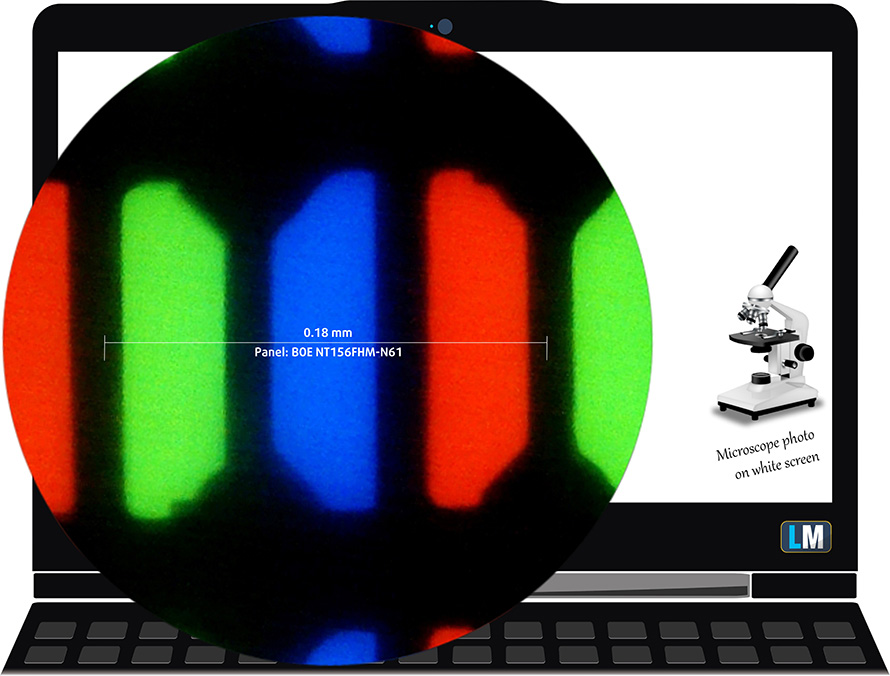
As expected from a TN panel – the viewing angles are terrible. We offer images at 45° to evaluate image quality.

The measured maximum brightness of 227 nits in the middle of the screen and 220 nits as an average for the whole area, with a maximum deviation of 10%. The Correlated Color Temperature on a white screen is 6750K – slightly colder than the optimal for the sRGB standard of 6500K.
In the illustration below you can see how the display performs from a uniformity perspective. In other words, the leakage of light from the light source.
Values of dE2000 over 4.0 should not occur, and this parameter is one of the first you should check if you intend to use the laptop for color-sensitive work. The contrast ratio is just too low – 220:1.
To make sure we are on the same page, we would like to give you a little introduction to the sRGB color gamut and the Adobe RGB. To start, there’s the CIE 1976 Uniform Chromaticity Diagram that represents the visible specter of colors by the human eye, giving you a better perception of the color gamut coverage and the color accuracy.
Inside the black triangle, you will see the standard color gamut (sRGB) that is being used by millions of people in HDTV and on the web. As for the Adobe RGB, this is used in professional cameras, monitors, etc for printing. Basically, colors inside the black triangle are used by everyone and this is the essential part of the color quality and color accuracy of a mainstream notebook.
Still, we’ve included other color spaces like the famous DCI-P3 standard used by movie studios, as well as the digital UHD Rec.2020 standard. Rec.2020, however, is still a thing of the future and it’s difficult for today’s displays to cover that well. We’ve also included the so-called Michael Pointer gamut, or Pointer’s gamut, which represents the colors that naturally occur around us every day.
The yellow dotted line shows Lenovo V15’s color gamut coverage.
Its display covers 50% of the sRGB/ITU-R BT.709 (web/HDTV standard) in CIE1976.
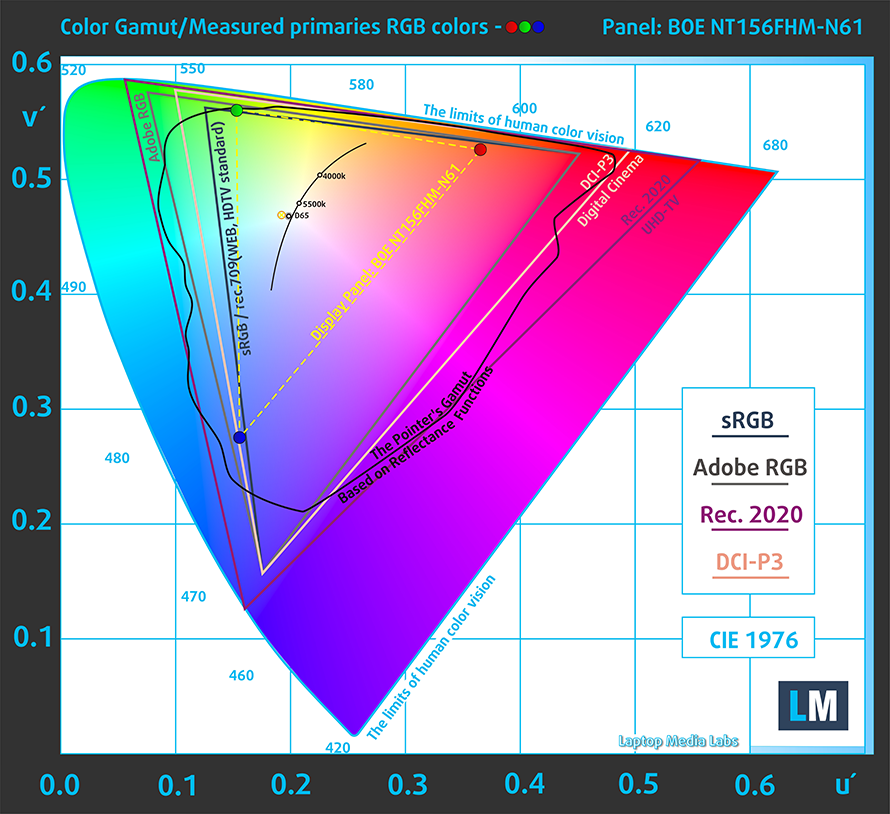
Our “Design and Gaming” profile delivers optimal color temperature (6500K) at 140 cd/m2 luminance and sRGB gamma mode.
We tested the accuracy of the display with 24 commonly used colors like light and dark human skin, blue sky, green grass, orange, etc. You can check out the results at factory condition and also, with the “Design and Gaming” profile.
Below you can compare the scores of Lenovo V15 with the default settings (left), and with the “Gaming and Web design” profile (right).
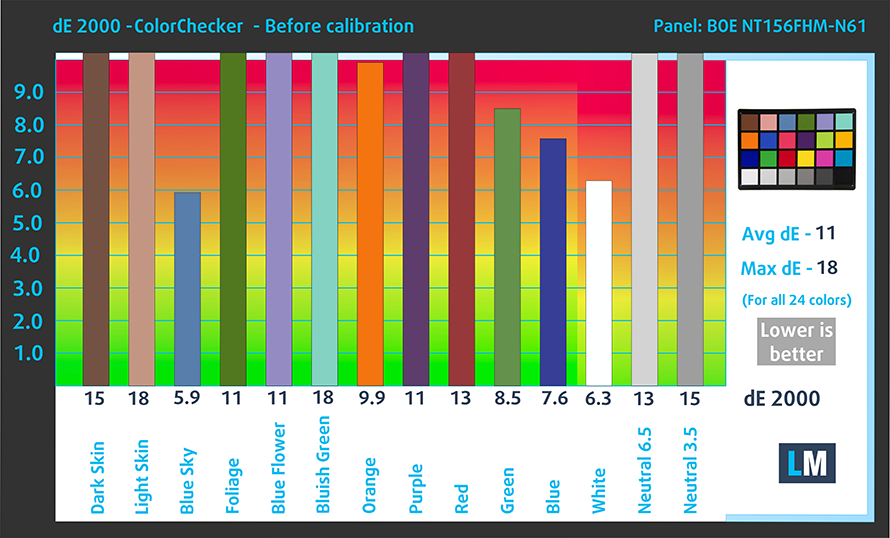
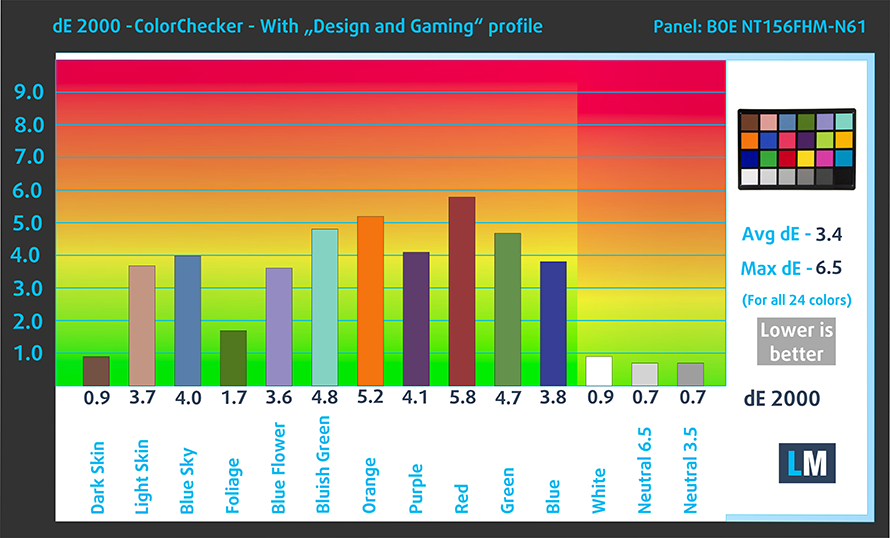
The next figure shows how well the display is able to reproduce really dark parts of an image, which is essential when watching movies or playing games in low ambient light.
The left side of the image represents the display with stock settings, while the right one is with the “Gaming and Web Design” profile activated. On the horizontal axis, you will find the grayscale and on the vertical axis – the luminance of the display. On the two graphs below you can easily check for yourself how your display handles the darkest nuances but keep in mind that this also depends on the settings of your current display, the calibration, the viewing angle, and the surrounding light conditions.
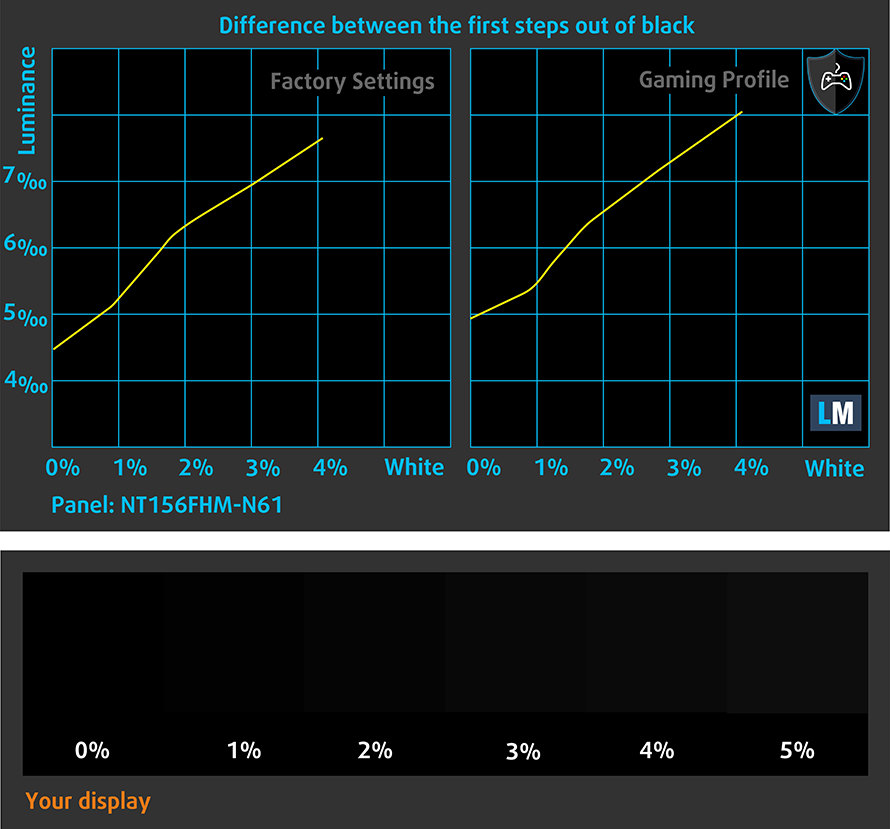
Response time (Gaming capabilities)
We test the reaction time of the pixels with the usual “black-to-white” and “white-to-black” method from 10% to 90% and vice versa.
We recorded Fall Time + Rise Time = 14 ms.

PWM (Screen flickering)
Pulse-width modulation (PWM) is an easy way to control monitor brightness. When you lower the brightness, the light intensity of the backlight is not lowered, but instead turned off and on by the electronics with a frequency indistinguishable to the human eye. In these light impulses, the light/no-light time ratio varies, while brightness remains unchanged, which is harmful to your eyes. You can read more about that in our dedicated article on PWM.
Lenovo V15 doesn’t use PWM to regulate its brightness levels. This makes it comfortable for long working periods, without being harmful in this aspect.
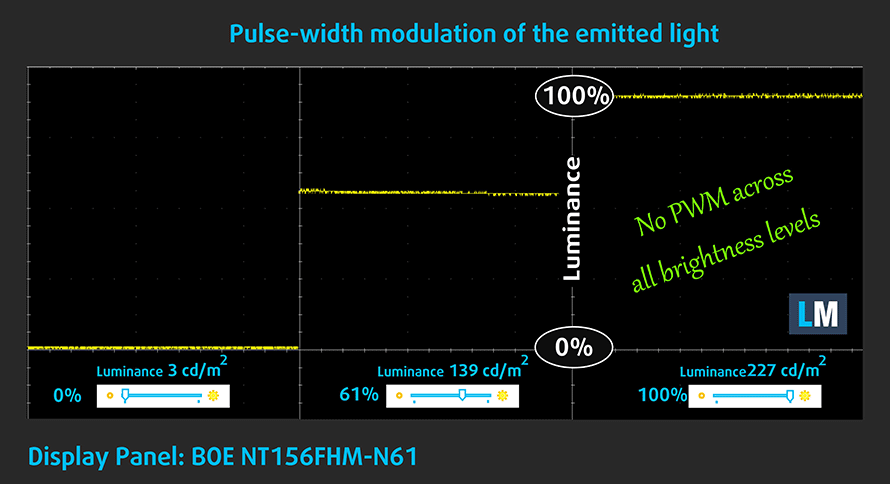
Blue light emissions
Installing our Health-Guard profile not only eliminates PWM but also reduces the harmful Blue Light emissions while keeping the colors of the screen perceptually accurate. If you’re not familiar with the Blue light, the TL;DR version is – emissions that negatively affect your eyes, skin and your whole body. You can find more information about that in our dedicated article on Blue Light.
Conclusion
Lenovo V15’s display has a TN panel with a Full HD resolution, relatively quick response times and a comfortable backlight in terms of PWM usage. However, it has poor viewing angles, a very low contrast ratio and a modest color coverage of just 50% of sRGB.
Buy our profiles
Since our profiles are tailored for each individual display model, this article and its respective profile package are meant for Lenovo V15 configurations with 15.6″ FHD TN BOE NT156FHM-N61 (BOE0812).
*Should you have problems with downloading the purchased file, try using a different browser to open the link you’ll receive via e-mail. If the download target is a .php file instead of an archive, change the file extension to .zip or contact us at [email protected].
Read more about the profiles HERE.
In addition to receiving efficient and health-friendly profiles, by buying LaptopMedia's products you also support the development of our labs, where we test devices in order to produce the most objective reviews possible.

Office Work
Office Work should be used mostly by users who spend most of the time looking at pieces of text, tables or just surfing. This profile aims to deliver better distinctness and clarity by keeping a flat gamma curve (2.20), native color temperature and perceptually accurate colors.

Design and Gaming
This profile is aimed at designers who work with colors professionally, and for games and movies as well. Design and Gaming takes display panels to their limits, making them as accurate as possible in the sRGB IEC61966-2-1 standard for Web and HDTV, at white point D65.

Health-Guard
Health-Guard eliminates the harmful Pulse-Width Modulation (PWM) and reduces the negative Blue Light which affects our eyes and body. Since it’s custom tailored for every panel, it manages to keep the colors perceptually accurate. Health-Guard simulates paper so the pressure on the eyes is greatly reduced.
Get all 3 profiles with 33% discount
Sound
Lenovo V15’s speakers produce sound with a rather good quality. Its low, mid and high tones are clear of deviations.
Drivers
All of the drivers and utilities for this notebook can be found here: https://pcsupport.lenovo.com/us/en/products/laptops-and-netbooks/lenovo-v-series-laptops/v15-iwl/downloads/driver-list
Battery
Now, we conduct the battery tests with Windows Better performance setting turned on, screen brightness adjusted to 120 nits and all other programs turned off except for the one we are testing the notebook with.
This notebook’s 35Wh battery was enough for 7 hours and 40 minutes of Web browsing and almost 7 hours of video playback.
In order to simulate real-life conditions, we used our own script for automatic web browsing through over 70 websites.
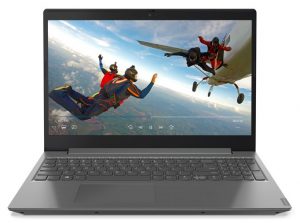
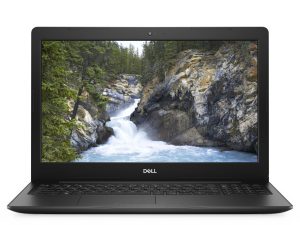
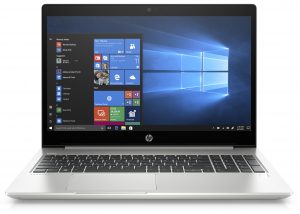
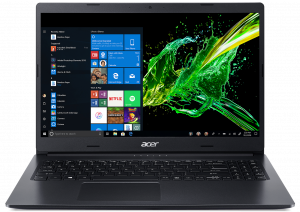
For every test like this, we use the same video in HD.




CPU options
At the bottom of the list, you will find the Intel Pentium Gold 5405U, then there is the Core i3-8145U, Core i5-8265U, and the Core i7-8565U.
Results are from the Cinebench 20 CPU test (the higher the score, the better)
Results are from our Photoshop benchmark test (the lower the score, the better)
Lenovo V15 CPU variants
Here you can see an approximate comparison between the CPUs that can be found in the Lenovo V15 models on the market. This way you can decide for yourself which Lenovo V15 model is the best bang for your buck.
Note: The chart shows the cheapest different CPU configurations so you should check what the other specifications of these laptops are by clicking on the laptop’s name / CPU.
Results are from the Cinebench R23 CPU test (the higher the score, the better)
Results are from our Photoshop benchmark test (the lower the score, the better)
GPU options
You have the choice to get the laptop with only an integrated Intel UHD Graphics 610 or 620 or get it with the dedicated GeForce MX110, equipped with 2GB of GDDR5 memory.
Results are from the 3DMark: Fire Strike (Graphics) benchmark (higher the score, the better)
Results are from the Unigine Superposition benchmark (higher the score, the better)
Lenovo V15 GPU variants
Here you can see an approximate comparison between the GPUs that can be found in the Lenovo V15 models on the market. This way you can decide for yourself which Lenovo V15 model is the best bang for your buck.
Note: The chart shows the cheapest different GPU configurations so you should check what the other specifications of these laptops are by clicking on the laptop’s name / GPU.
Results are from the 3DMark: Time Spy (Graphics) benchmark (higher the score, the better)
Results are from the 3DMark: Fire Strike (Graphics) benchmark (higher the score, the better)
Results are from the Unigine Superposition benchmark (higher the score, the better)
Gaming tests

| CS:GO | HD 1080p, Low (Check settings) | HD 1080p, Medium (Check settings) | HD 1080p, MAX (Check settings) |
|---|---|---|---|
| Average FPS | 77 fps | 55 fps | 43 fps |

| DOTA 2 | HD 1080p, Low (Check settings) | HD 1080p, Normal (Check settings) | HD 1080p, High (Check settings) |
|---|---|---|---|
| Average FPS | 91 fps | 67 fps | 31 fps |
Temperatures and comfort
Max CPU load
In this test we use 100% on the CPU cores, monitoring their frequencies and chip temperature. The first column shows a computer’s reaction to a short load (2-10 seconds), the second column simulates a serious task (between 15 and 30 seconds), and the third column is a good indicator of how good the laptop is for long loads such as video rendering.
Average core frequency (base frequency + X); CPU temp.
| Intel Core i5-8265U (15W TDP) | 0:02 – 0:10 sec | 0:15 – 0:30 sec | 10:00 – 15:00 min |
|---|---|---|---|
| Lenovo V15 | 3.23 GHz (B+102%) @ 78°C | 1.90 GHz (B+19%) @ 58°C | 2.02 GHz (B+26%) @ 61°C |
| ASUS X509 | 2.56 GHz (B+60%) @ 75°C | 2.33 GHz (B+46%) @ 97°C | 1.95 GHz (B+22%) @ 94°C |
| Lenovo Ideapad L340 (15″) | 3.27 GHz (B+104%)@ 72°C | 1.99 GHz (B+24%)@ 60°C | 2.01 GHz (B+26%)@ 65°C |
| ASUS VivoBook S15 S532 | 2.96 GHz (B+85%) @ 75°C | 2.95 GHz (B+84%) @ 90°C | 2.17 GHz (B+36%) @ 68°C |
| Lenovo ThinkBook 13s | 2.76 GHz (B+73%)@ 75°C | 2.74 GHz (B+71%)@ 84°C | 2.11 GHz (B+32%)@ 74°C |
| Lenovo ThinkPad T490s | 3.43 GHz (B+114%)@ 91°C | 2.69 GHz (B+68%)@ 91°C | 2.19 GHz (B+37%)@ 80°C |
| HP ProBook 450 G6 | 2.69 GHz (B+59%)@ 64°C | 2.53 GHz (B+60%)@ 68°C | 2.09 GHz (B+31%)@ 71°C |
Well, guys, this is not a bad performance coming from this laptop’s cooling. Its high clock speed in the beginning indicates a responsive machine in short tasks, while the low temperature at the end of the tests, means it will last you through the years.
Real gameplay
| NVIDIA GeForce MX110 | GPU frequency/ Core temp (after 2 min) | GPU frequency/ Core temp (after 30 min) |
|---|---|---|
| Lenovo V15 | 1006 MHz @ 61°C | 1006 MHz @ 61°C |
| HP 15 (15-da0000) | 1006 MHz @ 69°C | 1006 MHz @ 66°C |
As the HP 15 (15-da0000), the Lenovo V15 was also able to maintain the maximum Boost clock of this graphics card. Moreover, it did so at a lot lower temperature.
Comfort during combined load
In terms of comfortability – this is one of the quietest laptops during full load. However, the temperature on the keyboard reaches 41C.
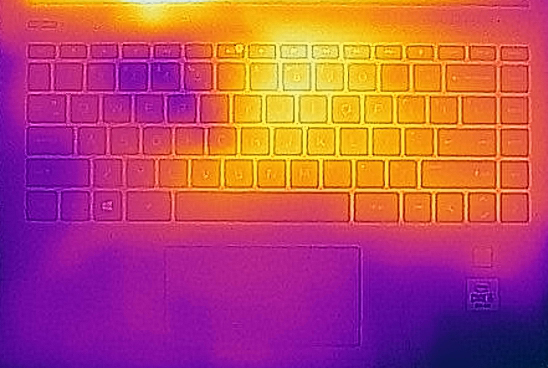
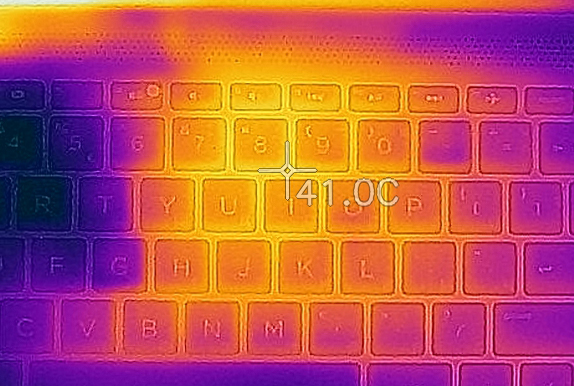
Verdict
There you have it. A 15-inch budget business laptop, that is no ThinkPad by any means but should be able to handle your daily tasks. We are glad to say that writing e-mails and building presentations will be great thanks to its decent keyboard, but in our opinion, you would be better of using a Bluetooth mouse, since the touchpad is not the best.
Other things you should consider are headphones or a speaker, as the ones equipped on the V15 are simply terrible. What is not terrible (and in fact is above average) is the battery life of the device. It was able to deliver 7 hours and 40 minutes of Web browsing and just under 7 hours of video playback from the tiny 35Wh battery pack. Nice optimization, Lenovo.
Lenovo V15’s display has a TN panel (BOE NT156FHM-N61) with a Full HD resolution, relatively quick response times and a comfortable backlight in terms of PWM usage. However, it has poor viewing angles, a very low contrast ratio and a modest color coverage of just 50% of sRGB.
Quite frankly, the V15 is a very ordinary piece of engineering. Its industrial design is nearly boring but we certainly liked the narrow side bezels around the screen. At least, it makes it look a little bit more up to date.
Also, it was nice to see an SD card reader on it, as well as a dedicated RAM SODIMM slot, M.2 PCIe x4 support and a 2.5″ SATA drive bay. However, there is no USB Type-C to play with and its TN display is just terrible if you have to show someone your presentation. Typically for a TN panel, the viewing angles are horrendous, as is the contrast ratio. But at this price point, you are more or less left with no choice. If you are willing to save your piggy bank from its misery, you can go for the more professional HP ProBook 450 G6 or even the Lenovo ThinkPad E590.
Pros
- Comfortable, spill-resistant keyboard
- Quiet under heavy load
- Adequate pricing
- Its display doesn’t flicker at any brightness level (BOE NT156FHM-N61)
- Equipped with an SD card reader and PCIe x4 SSD support
Cons
- Not the best build quality (uses only plastic)
- The TN panel has naturally uncomfortable viewing angles and poor contrast ratio (BOE NT156FHM-N61)
- It covers only 50% of the sRGB gamut (BOE NT156FHM-N61)
- Lacks a USB Type-C port
You can check the prices and configurations in our Specs System: https://laptopmedia.com/series/lenovo-v15/
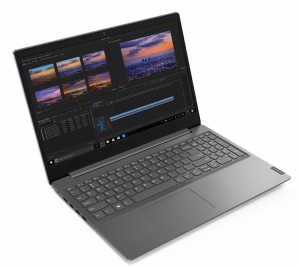
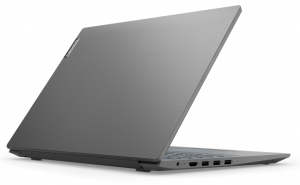
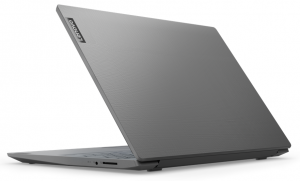
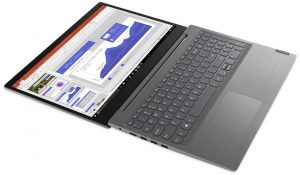
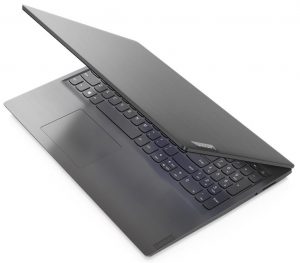
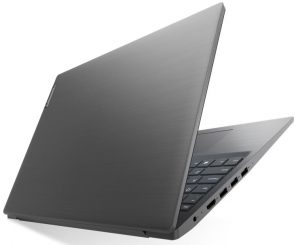
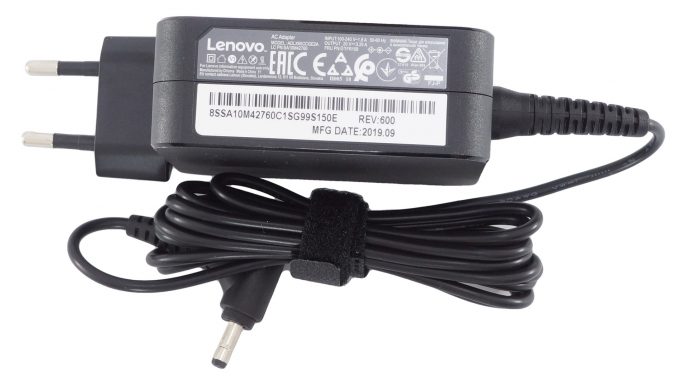
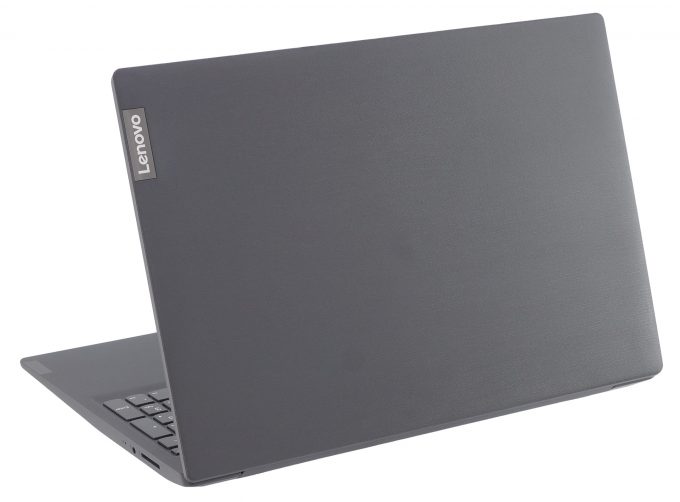
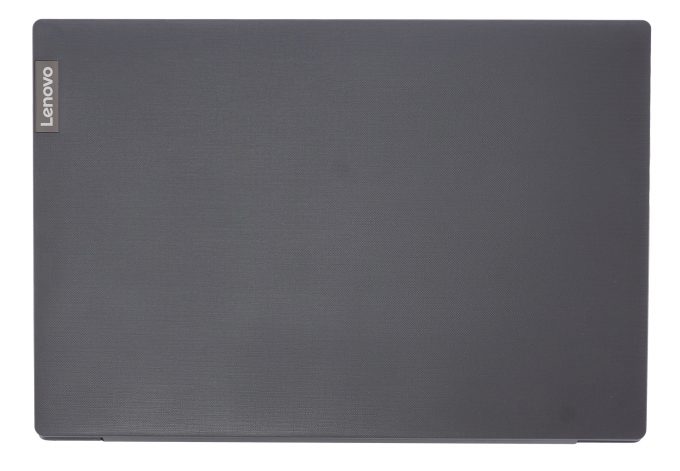
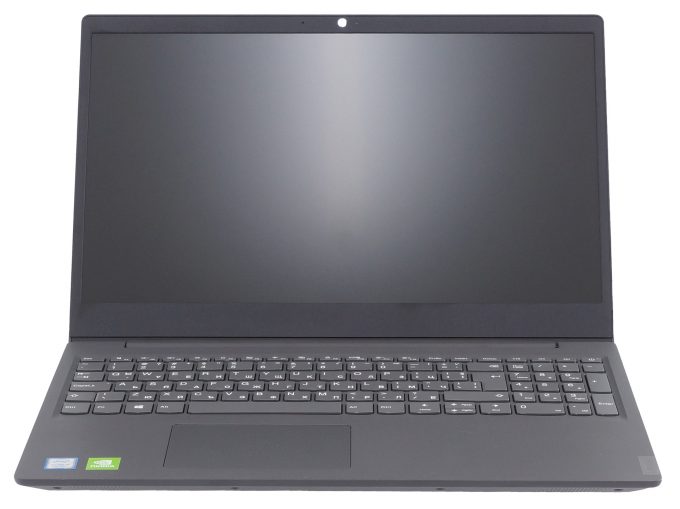
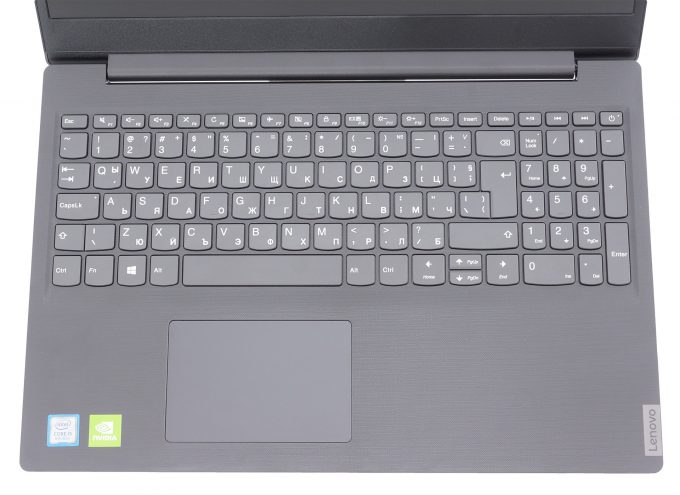
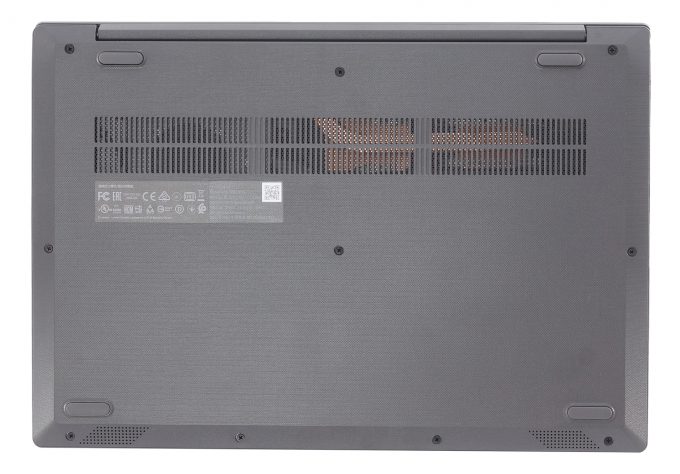


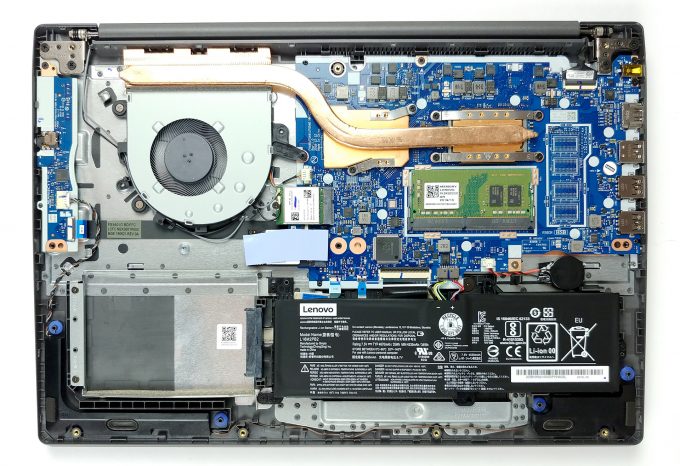
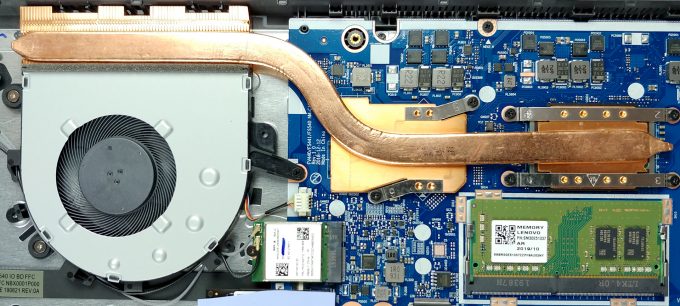
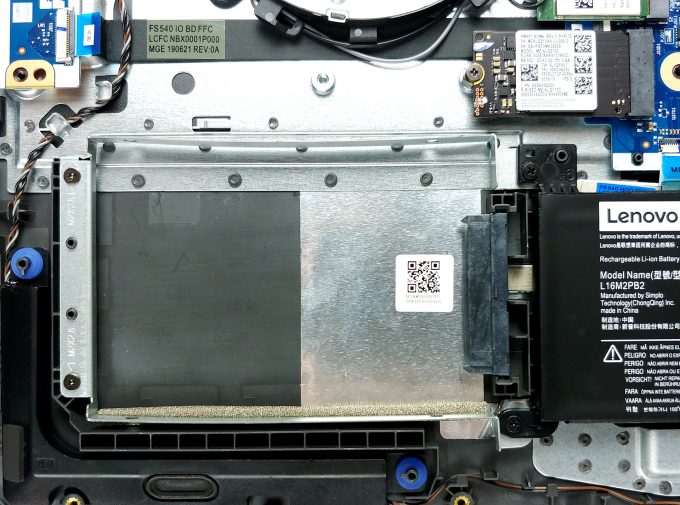
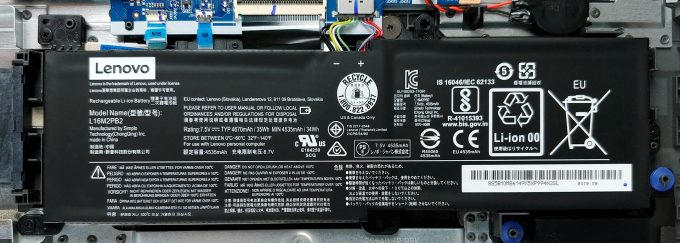
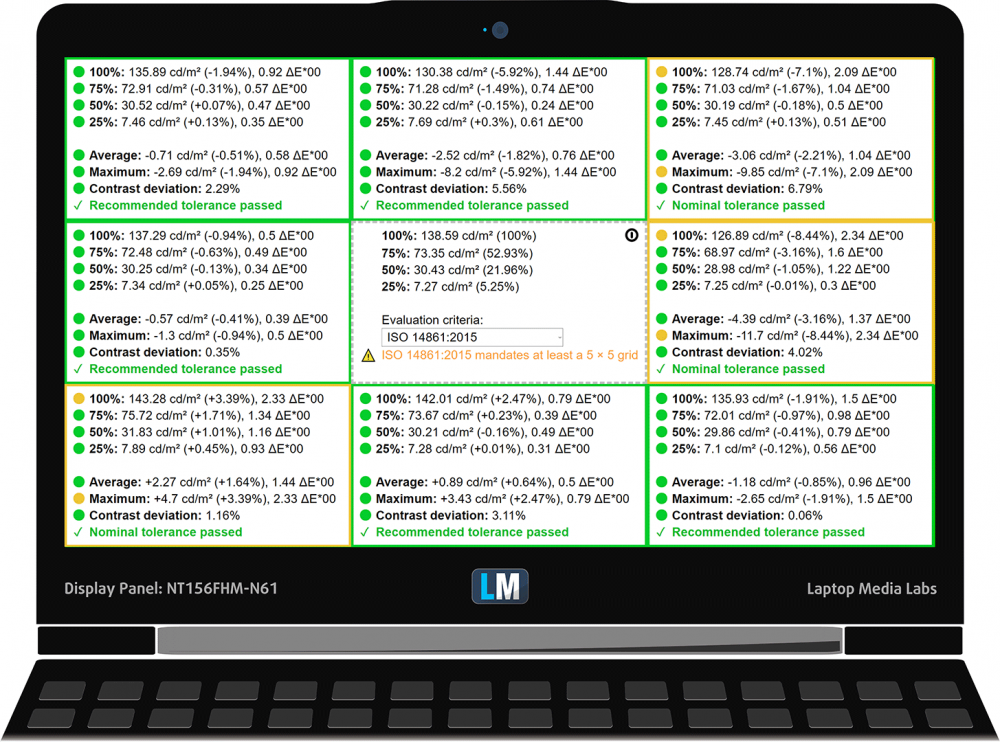









Hola, no dice de que velocidad son las memorias ( 2666mhz o 3200mhz) ?
SD card reader is on Pros and Cons?
It should come with a 4-in-1 SD / SDHC / SDXC / MMC card reader on the side.
Is a 220:1 contrast rate unworkable?
Be aware that this laptop although seems promising as a student one, is not fit for purpose. Manufactured from chip plastic is very prone to damage of any corner or lead which may lead to damage to the display and need for repair. UNless you will wrap it extra layers of bubble wrap foil forget about taking it into any laptop bag or backpack with any other usual stuff you need not to mention charger – damage is guaranteed. 2nd but the most important thing in that business- After sell services and warranty. Maybe I was unlucky but the laptop just dies… Read more »
thanks version i5 work fine with games or not
I literally bought this laptop (V15-IWL – 81YE) and it was so damn slow. It turns out my HDD was always on 99% or 100% capacity. I didn’t know what to do. I re-installed windows 10 and it seems to have fixed the problem. Apparently it was Microsoft’s preinstalled Office 365 which slowed my laptop down. One tip I would give you is to not buy a laptop with a HDD EVER. JUST PLEASE DONT BUY A LAPTOP WITHOUT A SSD OF ANY KIND. Using this laptop is a pain. 8GB 2400Mhz Sodimm RAM will NOT be enough to use… Read more »